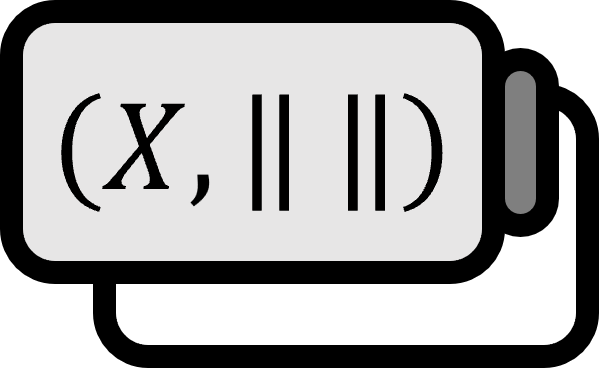Embeddings in Mathematics, Insertion Mappings
- imbedding and embedding mean the same thing.
- Embedding is translated as insertion, embedding, incorporating, burying, etc.
Definition1
Let $(X, \left\| \cdot \right\|_{X}), (Y, \left\| \cdot \right\|_{Y})$ be a normed space. If the following two conditions are satisfied for $X$ and $Y$, then $X$ is said to be embedded into $Y$, and $I : X \to Y$ is called the embedding.
$X$ is a subspace of $Y$.
For all $x \in X$, the identity operator $I : X \to Y$ defined by $Ix = x$ is continuous.
Explanation
Since the identity operator is linear, the second condition is equivalent to $I$ being bounded. Thus, it can be rewritten as follows.
$$ \exists M \gt 0 \text{ such that } \left\| Ix \right\|_{{Y}} \le M \left\| x \right\|_{X},\quad x \in X $$
If the embedding operator $I$ is compact, then $X$ is said to be compactly embedded into $Y$.
$f : X \to Y$ being an isometric embedding means that $f : X \to f(X)$ is an isometric mapping. By Theorem 2, it can be known that every metric space can be isometrically embedded into a complete metric space. That is, every metric space can be treated as a subset of a complete metric space.
Theorems
Theorem 1
Let $X, Y$ be a metric space. Let $f : X \to Y$ be an isometric mapping. Then, $f$ is an embedding.
Theorem 2
Let $(X, d_{X})$ be a metric space. Let $(Y,d_{Y})$ be a complete metric space. Then, an isometric embedding $f : X \to Y$ exists.
See Also
Robert A. Adams and John J. F. Foutnier, Sobolev Space (2nd Edition, 2003), p9 ↩︎
